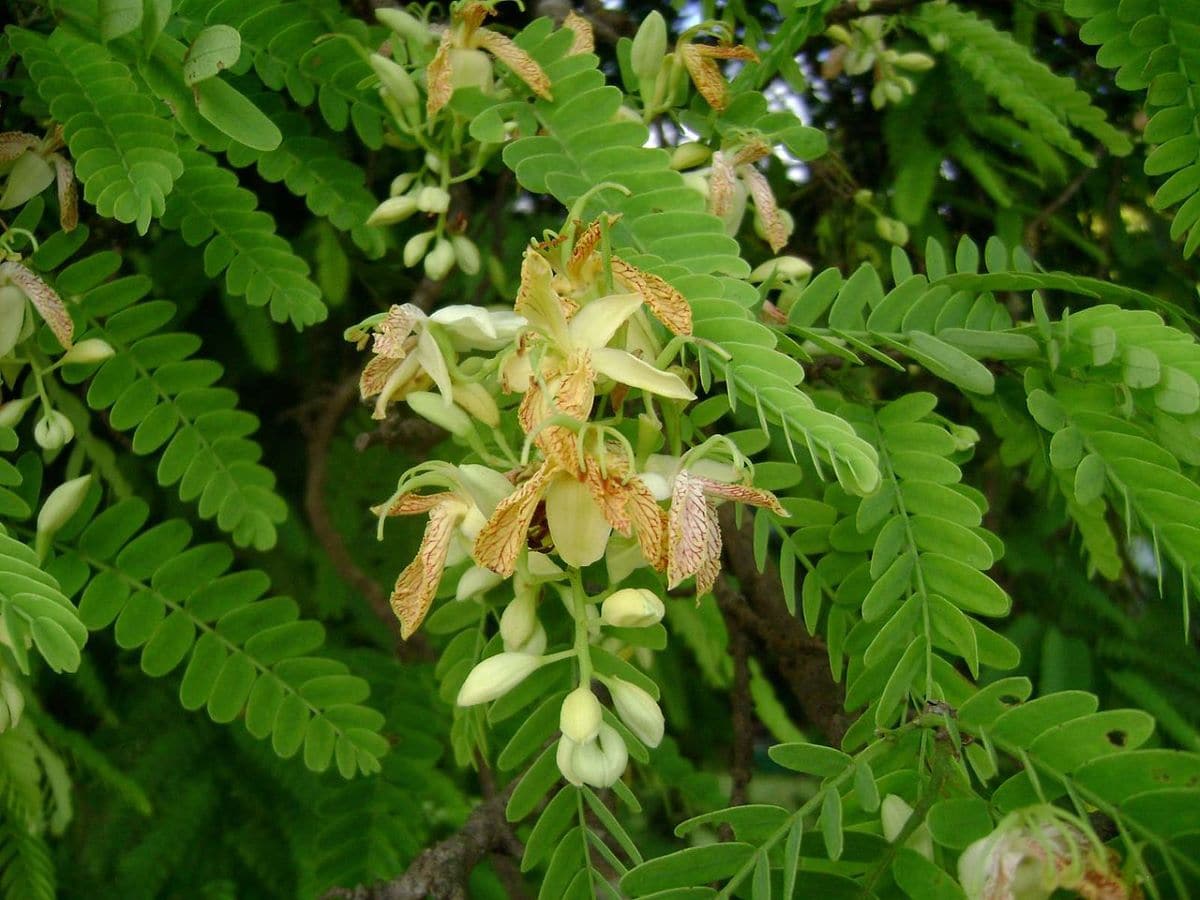
Image - Wikimedia / Tauʻolunga
Have you heard of tamarind? In countries like Spain, where the climate is temperate, it is a bit difficult to find it since it can only be in a garden in parts of southern Andalusia and the Canary Islands. But in the rest you can try to cultivate as well, because although it is sensitive to cold, as a greenhouse plant it behaves quite well. It is even capable of withstanding some very weak and occasional frost once it reaches a certain size.
In other countries it is a popular tree in gardens, terraces, patios. It grows fast, and is easy to care for. But also, the pulp of its fruits can be eaten without problem, either raw or as an ingredient in some dishes.
What is tamarind?
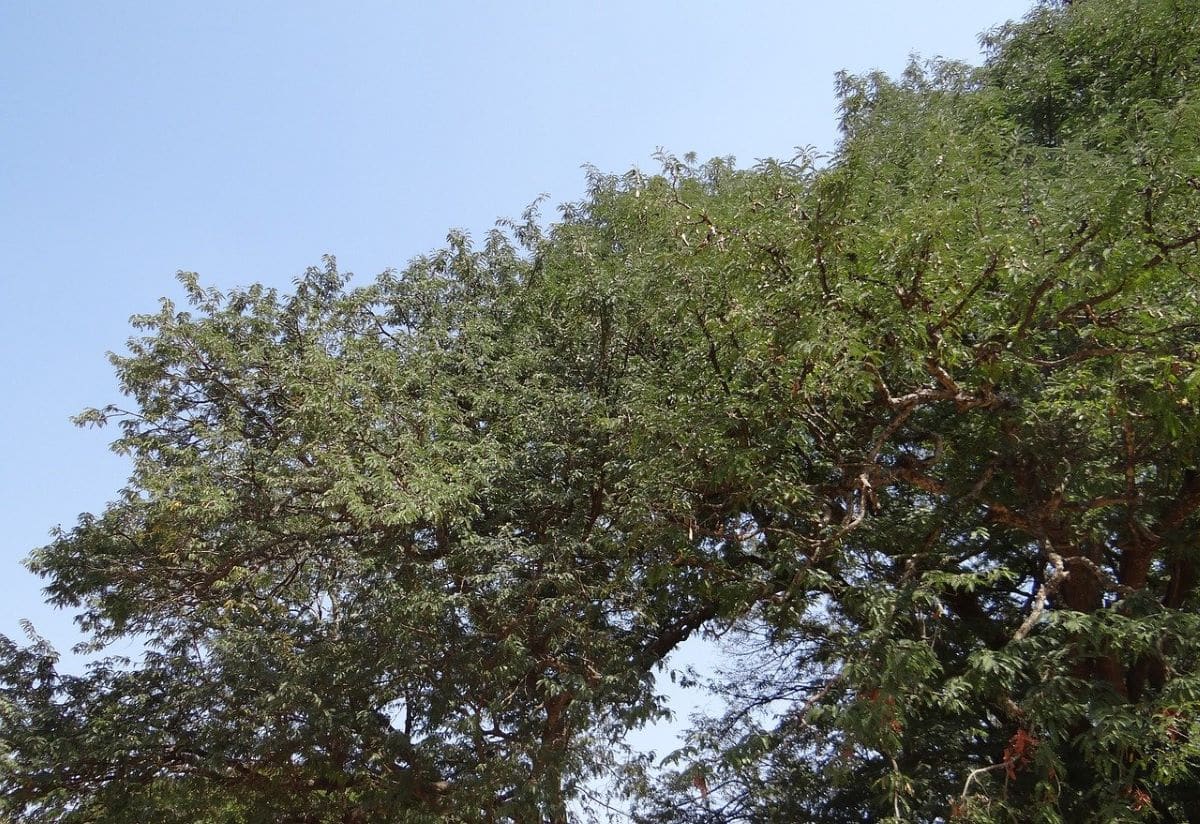
The tamarind it is an evergreen tree of African origin that reaches 30 meters in height. It is from the Fabaceae family, subfamily Caesalpinioidae, and like the rest of its closest relatives, it has bipinnate leaves. This means that they are composed of a series of pinnae or leaflets - in the case of our protagonist there are between 10 and 20 - which are arranged in pairs, and which are also opposite, that is, each one grows towards the opposite side. In addition, they are green and small, measuring between 1 and 3 centimeters long.
The flowers appear in clusters at the end of the branches, and have orange petals with some yellow stripes. And if we talk about the fruit, it is a legume that can measure up to 20 centimeters long by 3 centimeters wide. If we open it, we will find oblong seeds, very hard, and dark brown in color.
What is?
It is a tree that has multiple uses, which are:
Ornamental
The tamarind it is an exceptional garden tree, if the climate is favorable. It is a plant that can grow at a rate of 40 centimeters per year, so if you want to have one that gives you some shade and also produces flowers with a high decorative value, tamarind is a good option. As if that were not enough, it is possible to work it as bonsai.
Edible
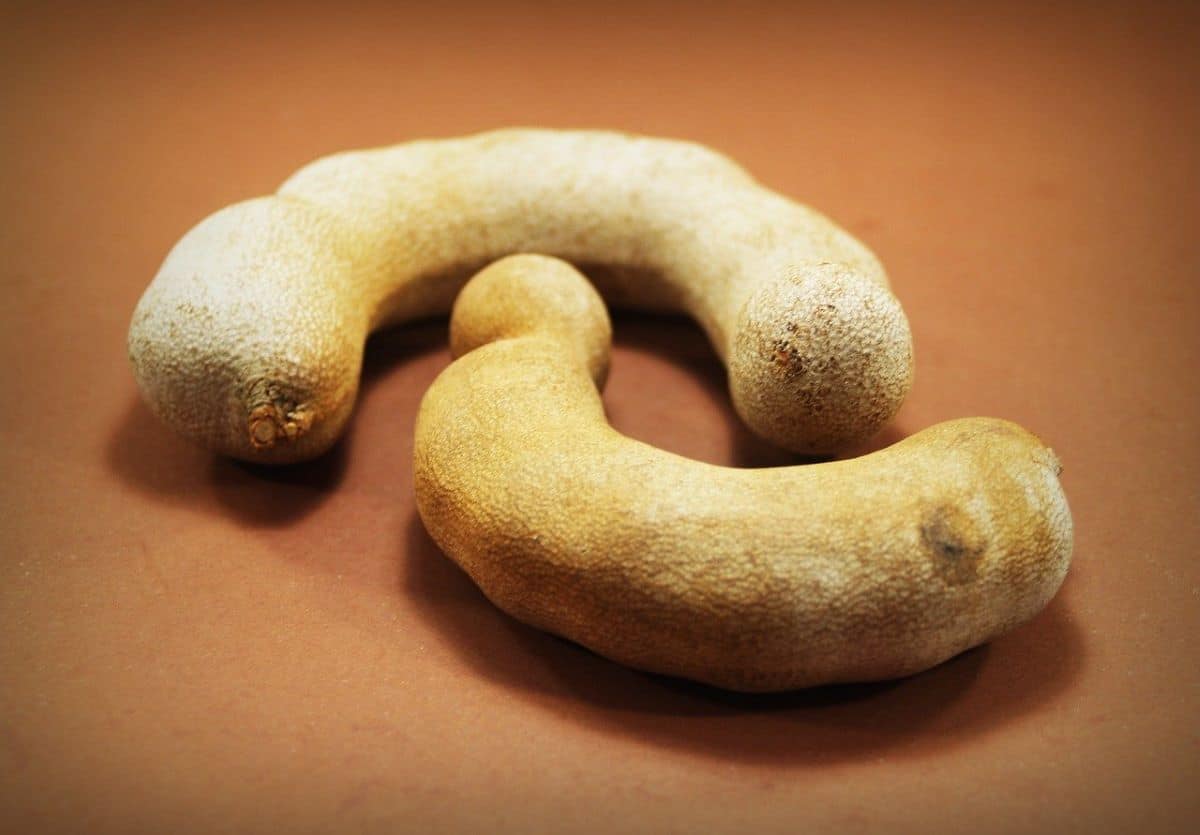
The pulp of the legume is a good appetizer. In fact, it has been consumed for millennia not only in Africa, but also in other places such as Asia or America, continents where it came from the hand of the human being.
How do you eat the tamarind fruit and what does it taste like?
The tamarind fruit has an acid taste and is used as an ingredient in desserts, sauces, drinks, soups and rice. Other ways to consume it is with water, raw, or in jam.
As a curiosity, tell you that some of the dishes in which it is the protagonist are: Pulihora rice (India), sweet and sour sauce (China), or tuna cerviche with tamarind vinaigrette (Peru).
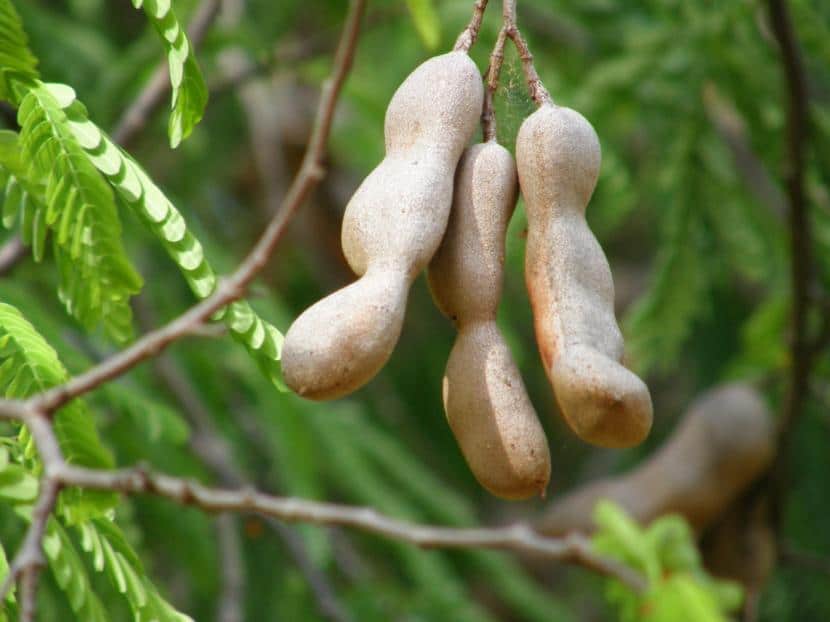
Medicinal
Various parts of the tree are used medicinally, such as the leaves, the bark of the trunk and branches, and the pulp of the fruits. They are consumed when a laxative is needed, or to alleviate the symptoms of diseases of the digestive system. In certain regions it is also used to reduce the fever caused by malaria, and as a mild sleeping pill.
Wood
Tamarind wood is strong and hard, so it is used to manufacture any type of furniture especially for indoors, but it is also made to be placed outdoors.
Tamarind tree care
El tamarind It is a plant that is not too demanding, but low temperatures affect it negatively. It is therefore a tree that must be "pampered" a bit if we live in an area where autumn and winter are cold.
Location
The first thing is to know where you are going to be. If we just bought a copy, We have to take it outside, since it is a plant that has to be directly exposed to the sun, otherwise it would not grow as it should.
But there is an exception: if it is autumn / winter, and the temperatures stay below 18ºC, then we will take you home, where you will be in a room with lots of natural light, and away from drafts (heating, windows, passageways, etc.).
Earth
As it is a plant that, depending mainly on the climate, will be in a pot or in the ground, it is important to know that the earth has to drain the water, and also has to do it quickly; In other words, it cannot be planted in heavy soils (or substrates, if we have it in a container), which become flooded, otherwise the tamarind would have too much water and would die.
Thus, we advise the following:
- In the event that you want to have it on the ground and the earth is not adequate, we will dig a hole of approximately 1 x 1 meter and then proceed to add a thick layer, about 20 centimeters, of clay or volcanic clay. Afterwards, we will finish filling it with mulch mixed with 30 or 40% of pumice or perlite.
- In the event that we want to grow it in a pot, we will have it much easier. We will only have to fill it with a universal substrate that contains coconut fiber (such as this) or perlite.
Subscriber
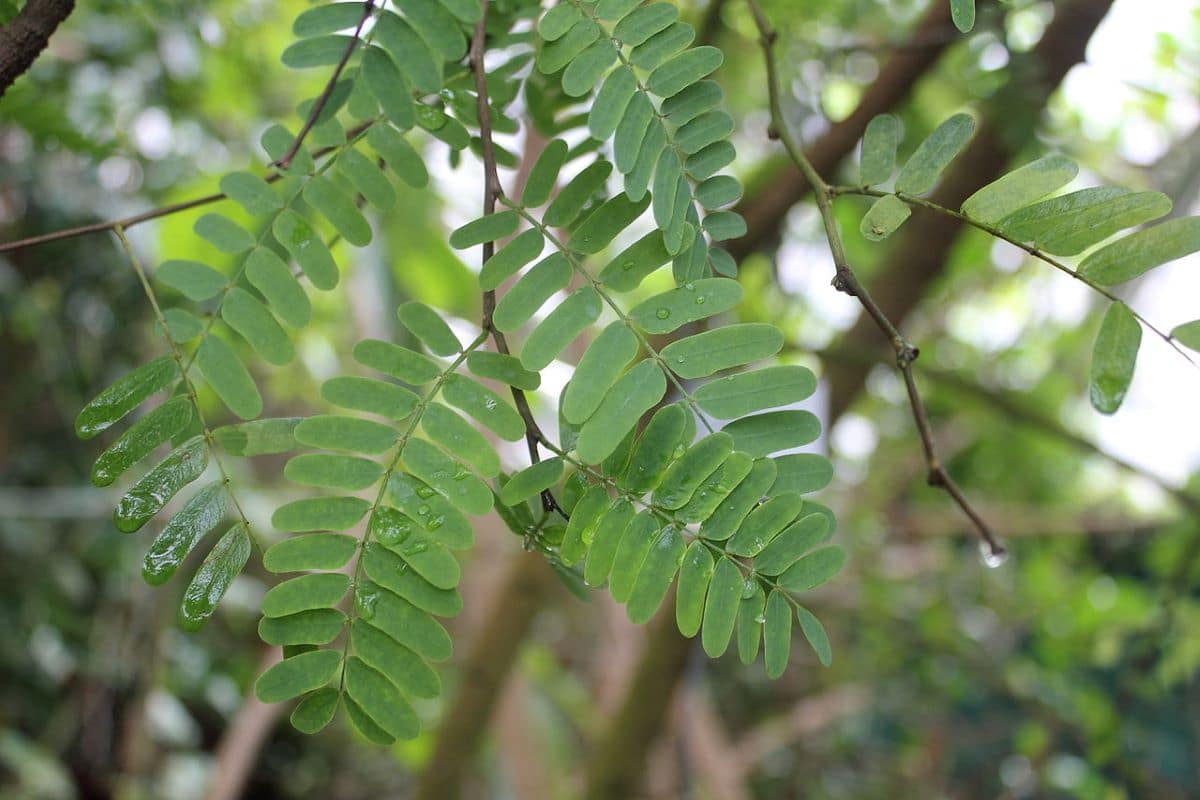
Image - Wikimedia / IKAI
Does tamarind have to be paid? When? Well, the subscriber never hurts, as long as the dose indicated by the manufacturer is respected. Tamarind is a plant that produces fruits with edible pulp, so that it is highly recommended to use fertilizers authorized for organic farming, in order to avoid unnecessary risks.
Ecological fertilizers are, for example, mulch, compost, algae extract fertilizer, green manure, eggshells, guano (for sale here), or the manure of herbivorous animals. We will pay it every 10, 15 or 20 days, depending on what is indicated on the product packaging, during spring and summer.
Multiplication
The tamarind multiplies by seeds, preferably in spring but can also be done in summer. You have to follow this step by step:
- The first is to take a crystal glass and fill it with a little water.
- Then we put it in the microwave for a few seconds, until we see that the water boils.
- Next, we take it out, carefully, and pour the seeds into a small strainer.
- Then, we take the strainer and put it in the glass with water for a second, ensuring that the seeds remain submerged for that time.
- The next step is to put the seeds in another glass with water, but this has to be at room temperature. In it they will be 24 hours.
- After that time, what we will do is fill pots or forest trays with soil for seedlings (for sale here), and water.
- We place one or two seeds in each pot or socket, we add fungicide to prevent the appearance of fungi, and we cover them with some soil. In this way, the sun will not hit them so directly.
- Finally, we take the seedbed or seedbeds outside, in a sunny area.
Thus, they will germinate soon, approximately 12-17 days later.
Pruning
If it has dry or diseased branches, they must be removed at the end of winter. This way, it can look pretty.
Rusticity
The tamarind plant is very sensitive to frost. Once it reaches adulthood it can withstand up to -1ºC, but only if it is punctually. It is preferable that the temperatures stay between 30 and 15ºC, although if it reaches 38ºC and you have water, nothing will happen to you either.
Where to buy tamarind?
Get seeds by clicking here:
